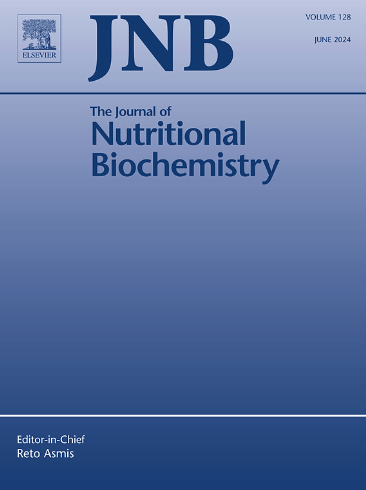骨质疏松和骨质减少患者的营养、炎症状态和死亡率之间的关系
IF 4.8
2区 医学
Q1 BIOCHEMISTRY & MOLECULAR BIOLOGY
引用次数: 0
摘要
骨质疏松症的特点是骨密度降低和微结构恶化,是一个重大的全球健康问题,在老龄人口和营养不良人群中尤其如此。骨质疏松性骨折影响多达50%的女性和22%的男性,这使得评估指标的优化至关重要。通常与营养不良有关的全身性炎症在骨质流失中起着关键作用。晚期肺癌炎症指数(ALI)是炎症和营养的标志,具有预测预后的潜力,但对骨质疏松症的研究还不够。本研究使用NHANES数据探讨ALI与骨质疏松症死亡率的关系,提示其作为预后工具的潜力。回顾性分析2007-2023年全国健康与营养检查调查(NHANES)的数据。Kaplan-Meier生存曲线描述生存数据,并通过多变量Cox回归分析和限制性三次样条图评估ALI与死亡率之间的关系。还进行了亚组分析和中介分析。该研究包括4,525例骨质疏松症患者,其中938例全因死亡和223例心血管死亡。ALI与全因死亡率和心血管死亡率均呈线性负相关。中介分析显示,4.9%和6.6%的骨质疏松/骨质疏松性骨折与死亡风险之间的关联是由ALI介导的。亚组分析表明,ALI可预测不同性别和活动水平的死亡率。这项研究强调了ALI与骨质疏松症患者的全因死亡率和心血管死亡率之间的线性负相关。本文章由计算机程序翻译,如有差异,请以英文原文为准。
Association between nutritional and inflammatory status and mortality outcomes in patients with osteoporosis and osteopenia
Osteoporosis, characterized by reduced bone density and microarchitecture deterioration, is a significant global health concern, particularly among aging populations and those with malnutrition. Osteoporotic fractures affect up to 50% of women and 22% of men, making the optimization of assessment metrics crucial. Systemic inflammation, often linked to malnutrition, plays a key role in bone loss. The Advanced Lung Cancer Inflammation Index (ALI), a marker of inflammation and nutrition, shows potential in predicting prognosis but has been insufficiently studied in osteoporosis. This study uses NHANES data to explore ALI’s association with mortality in osteoporosis, suggesting its potential as a prognostic tool. Data from the National Health and Nutrition Examination Survey (NHANES) (2007-2023) were analyzed retrospectively. Kaplan-Meier survival curves were used to depict survival data, and the relationship between ALI and mortality was assessed through multivariable Cox regression analysis and restricted cubic spline plots. Subgroup and mediation analyses were also conducted. The study included 4,525 osteoporosis patients with 938 all-cause and 223 cardiovascular deaths. A linear negative correlation between ALI and both all-cause and cardiovascular mortality was observed. Mediation analysis showed that 4.9% and 6.6% of the associations between osteoporosis/osteoporotic fractures and mortality risk were mediated by ALI. Subgroup analyses indicated that ALI predicts mortality across genders and activity levels. This study highlights a linear negative correlation between ALI and both all-cause and cardiovascular mortality in osteoporosis patients.
求助全文
通过发布文献求助,成功后即可免费获取论文全文。
去求助
来源期刊

Journal of Nutritional Biochemistry
医学-生化与分子生物学
CiteScore
9.50
自引率
3.60%
发文量
237
审稿时长
68 days
期刊介绍:
Devoted to advancements in nutritional sciences, The Journal of Nutritional Biochemistry presents experimental nutrition research as it relates to: biochemistry, molecular biology, toxicology, or physiology.
Rigorous reviews by an international editorial board of distinguished scientists ensure publication of the most current and key research being conducted in nutrition at the cellular, animal and human level. In addition to its monthly features of critical reviews and research articles, The Journal of Nutritional Biochemistry also periodically publishes emerging issues, experimental methods, and other types of articles.
 求助内容:
求助内容: 应助结果提醒方式:
应助结果提醒方式:


